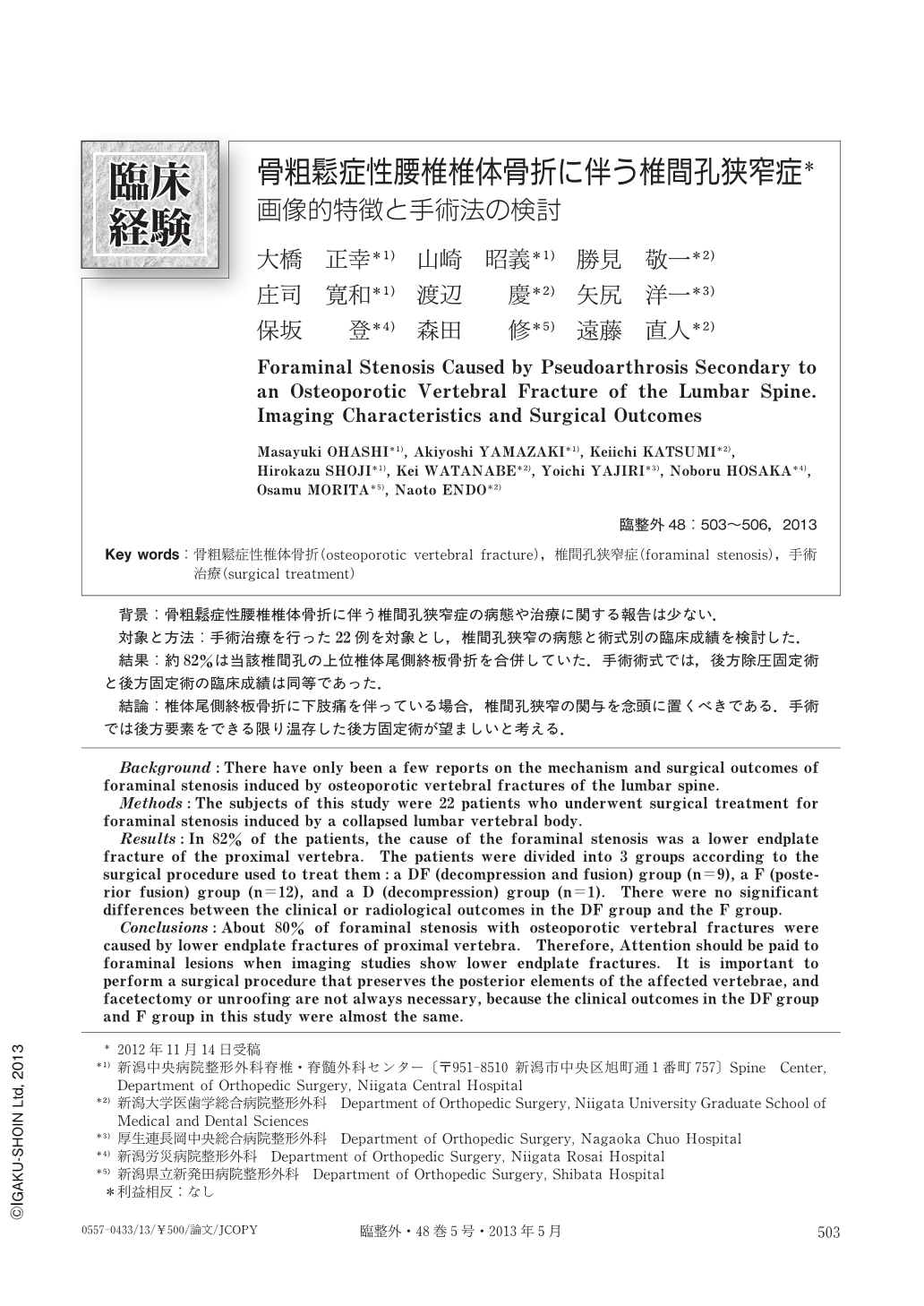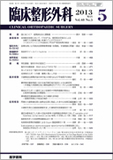Japanese
English
- 有料閲覧
- Abstract 文献概要
- 1ページ目 Look Inside
- 参考文献 Reference
背景:骨粗鬆症性腰椎椎体骨折に伴う椎間孔狭窄症の病態や治療に関する報告は少ない.
対象と方法:手術治療を行った22例を対象とし,椎間孔狭窄の病態と術式別の臨床成績を検討した.
結果:約82%は当該椎間孔の上位椎体尾側終板骨折を合併していた.手術術式では,後方除圧固定術と後方固定術の臨床成績は同等であった.
結論:椎体尾側終板骨折に下肢痛を伴っている場合,椎間孔狭窄の関与を念頭に置くべきである.手術では後方要素をできる限り温存した後方固定術が望ましいと考える.
Background:There have only been a few reports on the mechanism and surgical outcomes of foraminal stenosis induced by osteoporotic vertebral fractures of the lumbar spine.
Methods:The subjects of this study were 22 patients who underwent surgical treatment for foraminal stenosis induced by a collapsed lumbar vertebral body.
Results:In 82% of the patients, the cause of the foraminal stenosis was a lower endplate fracture of the proximal vertebra. The patients were divided into 3 groups according to the surgical procedure used to treat them:a DF (decompression and fusion) group (n=9), a F (posterior fusion) group (n=12), and a D (decompression) group (n=1). There were no significant differences between the clinical or radiological outcomes in the DF group and the F group.
Conclusions:About 80% of foraminal stenosis with osteoporotic vertebral fractures were caused by lower endplate fractures of proximal vertebra. Therefore, Attention should be paid to foraminal lesions when imaging studies show lower endplate fractures. It is important to perform a surgical procedure that preserves the posterior elements of the affected vertebrae, and facetectomy or unroofing are not always necessary, because the clinical outcomes in the DF group and F group in this study were almost the same.

Copyright © 2013, Igaku-Shoin Ltd. All rights reserved.


